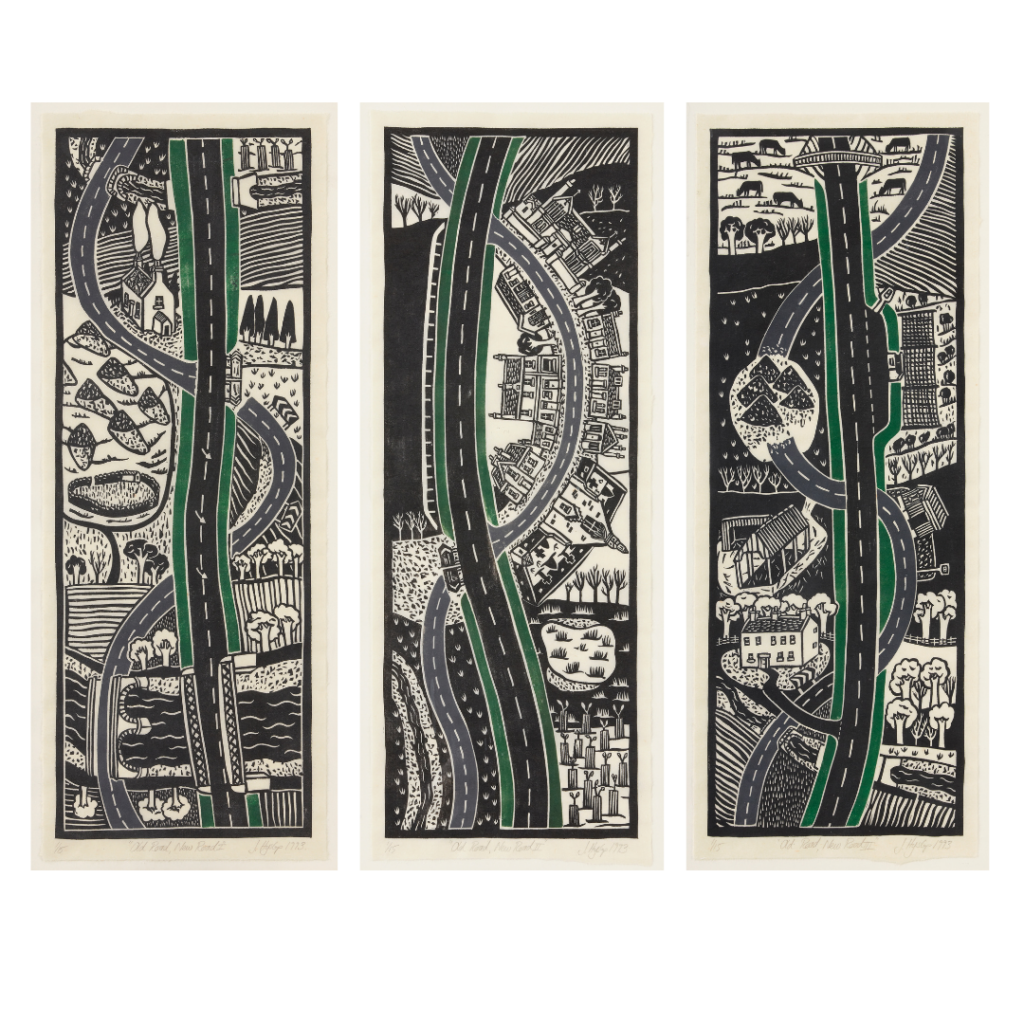

In 2022 we invited four early career curators to work with the Art in Healthcare Collection and team. Our aim was to provide early career opportunities post-pandemic and to gain fresh perspectives on the collection and how it could be curated to meet the needs of health, social care and community settings. The programme was supported by Museum Galleries Scotland.
Isabella Wagner:
JOURNEYS is a collection of work that maps the push and pull between the artificial and the organic. The works in this collection can all be considered through the lens of walking, travel and mapping and ask us to consider our relationship to the space and world around us. It was only two years ago that, for many, daily walks meant a chance to take a break from being locked down in our homes, an opportunity to relax and a return to spending time outdoors. Pollution as a result of travel was also mitigated at this time — we were limited to travelling locally and most often by foot. Our relationship with the world altered significantly at that time as the ways and the means with which we travelled changed. As a consequence, our experience of the world changed. We were taught to take things slower, to reckon with this feeling of giving up control, to soak in the experience of our world and to experience the changes happening in our lives mindfully.
Maps are a symbolic depiction of space: they allow us to navigate, explain, provide guidance and information about an environment; they have been used in attempts to gain knowledge and take control of an environment; to define and instate borders, and to map the relationships between urban areas and rural areas. Some of the works in this collection resemble maps, such as Jane Hyslop’s triptych Old Road, New Road. It depicts a birds-eye view of buildings set along long roads intersecting farmland, wooded areas and mounds of earth. In doing so, it blurs the boundaries we often place between spaces in the world, such as a division between interior and exterior space, manmade buildings and natural spaces, cultivated landscapes and wild landscapes. Others enact a sort of mapping of an environment. John Galloway’s 46 Discarded Objects is a collection of objects that appear as though they have been gathered during a walk on an autumn day. In the objects’ ability to represent the environment from which they come from, even in an abstract way, the work itself becomes a map in some sense.
In various ways, the works question our relationship with the world around us. While they were all produced some years ago now, they have a renewed and ongoing relevance to this time as explorations of how best to relate to, explain and define the ever-changing world around us.
30 October 2023 by
Amy Miles